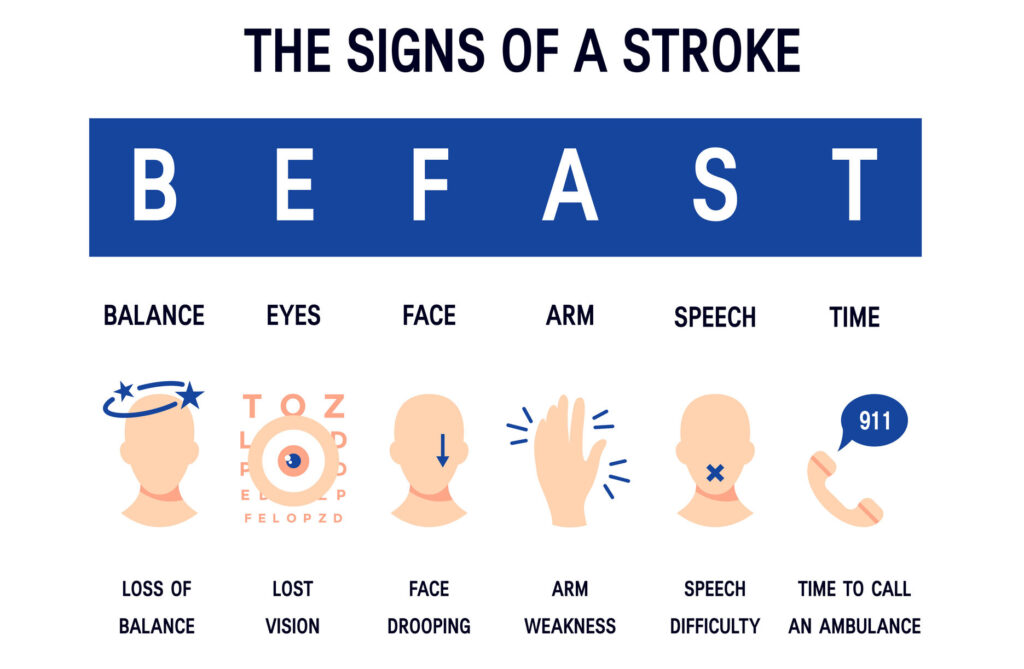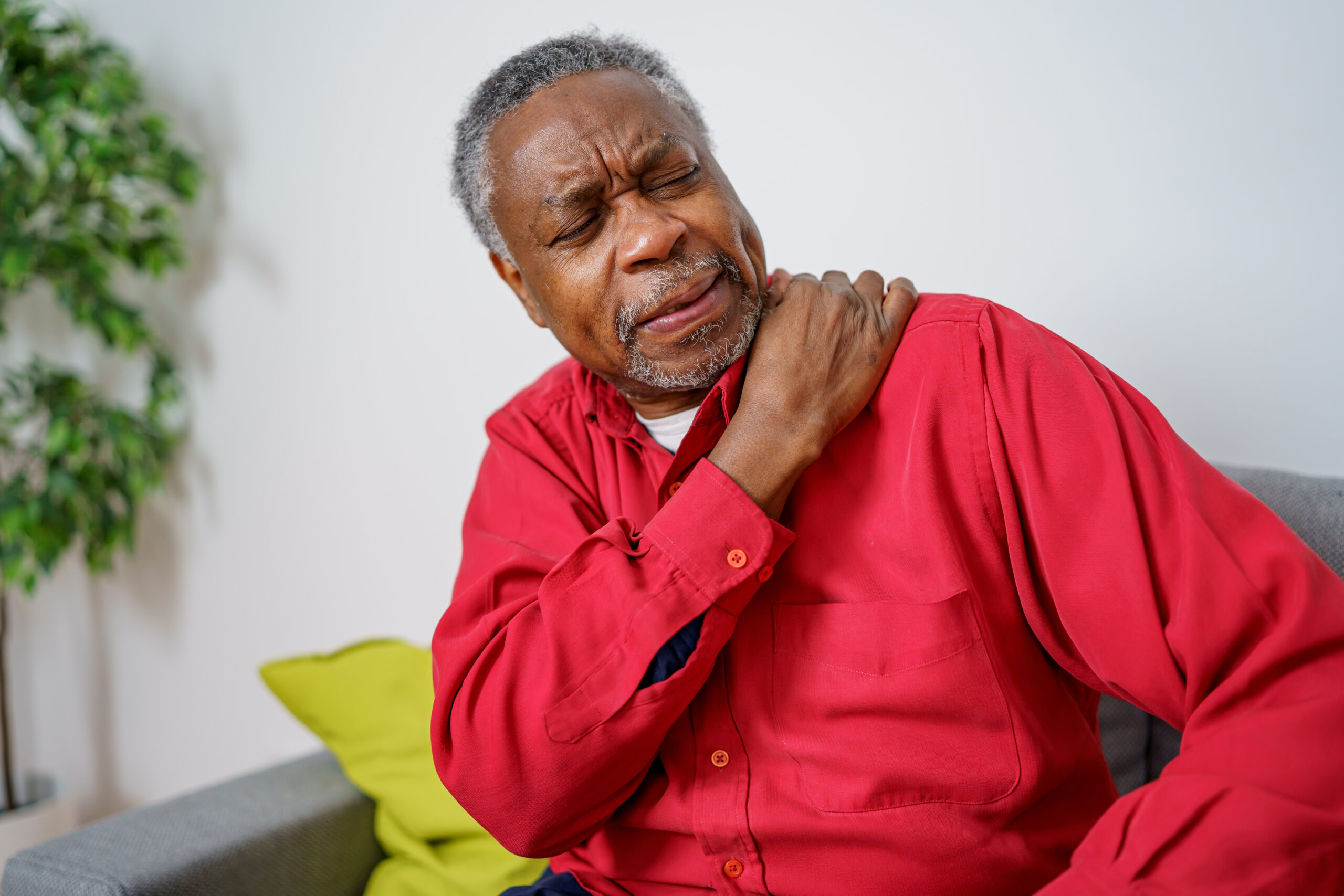We all hope it will never happen to us or to someone we know, yet preparing for and knowing what to do when faced with a health emergency is often the best way to render aid that can minimize long-term harm and improve the probability of recovery and survivability. According to the Centers for Disease Control, every 40 seconds, someone in the United States suffers a stroke. Stokes can happen to anyone, anywhere, at any time. Strokes are medical emergencies that require swift action, and being equipped with the knowledge to identify symptoms and take life-saving action is crucial when every second counts.
To help raise awareness of and equip our community to BEFAST, we sat down with two experts at Steward to learn more. Amy Lopez is the Stroke Coordinator at Rockledge Regional Medical Center in Rockledge, Florida, and Eileen Kelly is the Stroke Coordinator at Sharon Regional Medical Center in Sharon, PA, as well as at Trumbull Regional Medical Center in Warren, OH.
What does it mean to “suffer a stroke”?
“A stroke is a serious medical condition that occurs when the flow of blood to the brain is blocked,” says Amy Lopez. “When this happens, our brain cells don’t receive the blood and oxygen they need to survive, causing nerve cells to stop working and die.”
“There are two main ways a person’s brain may become deprived of the blood supply it needs,” adds Eileen Kelly. “The first is either a blockage (clot) within the blood vessel, and the second is a rupture (bleeding) of the blood vessel in the brain, leading to a build-up of pressure on the surrounding tissue as blood accumulates around the brain.”
In either case, the affected region of the brain is starved of the oxygen it needs to function, and tissues become damaged, causing the individual to present symptoms. “For example, if a person is experiencing a stroke in the cerebellum (the back of the brain), they may present symptoms such as dizziness, double vision, and loss of balance,” says Kelly.
Can you elaborate more on the different types of strokes?
“According to The American Stroke Association, ischemic strokes account for about 87 percent of all strokes. An ischemic stroke is caused by clots that block the blood supply to the brain. This could be the result of plaque build-up in the vessel walls. Hemorrhagic stroke is caused by ruptured blood vessels that bleed into the brain and accounts for the other 13 percent of stroke cases,” explains Lopez.
“Then there is the case of what some often refer to as a ‘mini stroke’ because the symptoms may only last for a few minutes,” adds Kelly. “This type of stroke is a transient ischemic attack (TIA). Like an ischemic stroke, a TIA is also caused by a blockage of the blood vessel; however, the clot may become dislodged or dissovled, allowing regular blood flow to return and symptoms to subside.”
While a TIA may not cause permanent damage, it should be considered a warning of a potential full-blown stroke ahead. Even if the symptoms resolve, an individual experiencing a TIA should seek medical attention promptly.
What are the known risk factors that contribute to the likelihood of a stroke?
“When it comes to a stroke, there are many risk factors,” both Lopez and Kelly share. The American Stoke Association groups known risk factors into two main categories:
- Modifiable (can be controlled, treated, or improved)
- There are factors that we can influence to improve our well-being and reduce the probability of experiencing a stroke. This may require a change to our diet, adopting a healthier lifestyle, or seeking care to treat a pre-existing condition. Such factors include high blood pressure, obesity, high cholesterol, sleep apnea, AFib, physical inactivity, smoking, and diabetes.
- Non-modifiable (outside our control)
- There are also factors that someone may be predisposed to that may be outside our control. These include age (risk increases as individuals become older), ethnicity, gender, and family or personal history of stroke.
There is also a third category of risk factors. This includes drug and alcohol abuse, socioeconomic status, and environment.
Bystander intervention: what are the symptoms someone should look out for?
“Some of the most common symptoms of stroke are facial drooping, difficulty with speech, arm or leg weakness on one side of the body, sudden severe headache, vision problems, confusion, loss of balance, and the inability to follow simple commands or identify simple objects,” Lopez shares.
“When you suspect someone may be experiencing a stroke, think of BEFAST (a nudge to the quick intervention required to improve the individual’s chance of recovery),” says Kelly.
To easily remember the symptoms of a stroke, use the acronym B.E.F.A.S.T., which stands for:
- Balance is lost
- Eyes become blurry
- Face drooping
- Arm weakness
- Speech difficulty
- Time to call 911

“Especially when experiencing a hemorrhagic stroke, an individual may complain of having the worst headache of their life; this is often an ignored symptom,” adds Kelly.
What treatment options are available?
“Of the acronym BEFAST, the last one, time, is the most important because time is of the essence when someone is experiencing a stroke,” warns Kelly. “It is important to arrive at a facility where the appropriate care can be administered (i.e., a primary or comprehensive stroke center). For example, in the case of an ischemic stroke, the patient may be treated with IV Alteplase or Tenecteplase within three to four hours of symptoms presenting. This IV treatment attacks the clot, which starts to dissolve, and the symptoms may begin to resolve immediately. It is important for a bystander to also remember the last known well time (i.e., when the individual started presenting symptoms).”
“Sometimes a mechanical thrombectomy may be used within 24 hours of symptom onset in the case of an ischemic stroke,” adds Lopez. “During this procedure, a catheter is inserted into an artery to access the blockage. A stent retriever then opens and grabs the clot. In the event of a hemorrhagic stroke, it is important to reduce intracranial pressure, locate the source of the bleed, and ‘clip’ it if able.”
After a stroke, what rehabilitation options are available?
“After a stroke, many patients require some form of therapy. This could be either one or a combination of physical therapy, occupational therapy, or speech therapy,” Lopez says. “These therapies start in the hospital, and patients may sometimes go to an acute rehab hospital, skilled nursing facility, or receive home health care. Studies have shown that early intensive rehab can improve levels of recovery.”
Are there preventative measures individuals can take?
“To impact the modifiable factors, the most important thing an individual can do to reduce their risk of a stroke is to stop smoking, avoid drinking too much alcohol, adopt a healthier lifestyle such as a healthy diet and regular exercise, take medications as prescribed, and attend all routine medical appointments,” advises Lopez. “When there is a known preexisting condition, it is important to make sure you have regular check-ups with your health care provider. They will assist in monitoring your blood pressure, blood sugar, and cholesterol. They can prescribe appropriate medications and make dosage adjustments as needed.”
“For those with a known family history of stroke, it is even more important to make and maintain healthy lifestyle changes and consistently follow up with all providers involved in your health care,” emphasizes Kelly.
How best can someone support a stroke survivor?
Life after a stroke is different for each survivor. Some may have little to no deficits after a stroke, but for others, the reality could be life-altering. “Especially if the stroke caused significant damage that has made the individual dependent on others to fulfill day-to-day activities, the individual may develop depression and anxiety,” cautions Lopez. “It is important to recognize these signs and, in addition to being a compassionate caregiver, seek help and support for the individual and yourself.”
“It is important to be patient and vigilant, and ready and willing to seek and accept help,” adds Kelly. “The good news is that there are community resources and support groups available for both survivors and caregivers.”
Understanding strokes, recognizing symptoms, and taking immediate action are crucial for saving lives. Let us educate ourselves and our communities and promote healthier lifestyles as proactive steps to reduce the incidence of strokes and ensure a better quality of life for all. Remember, when every second counts, time is of the essence—BEFAST to save lives.
If you are experiencing any warning signs of a stroke, call 911 immediately. To reduce your risk of stroke, schedule an appointment with a Steward specialist today. You can search for a provider within your network by visiting Steward DoctorFinder™.




